

Max Davies
2025 Toyota GR Supra Track Edition review
5 Days Ago
As if the standard Range Rover wasn't enough, the SV variants take on the Bentayga and the Cullinan with ultimate expressions of modern luxury.

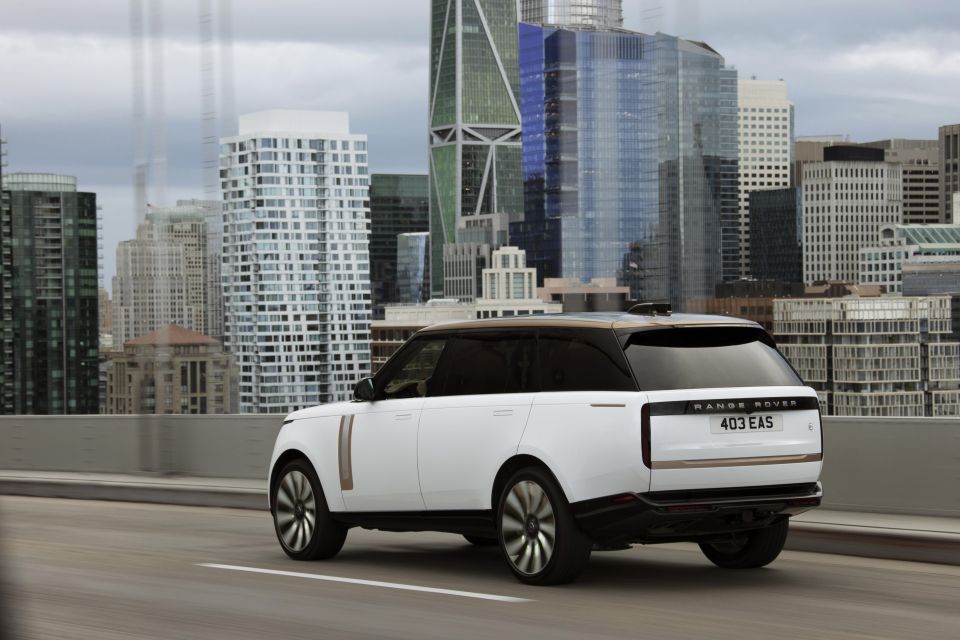

Quickly see how this car stacks up against its competition. Select any benchmark to see more details.
Where expert car reviews meet expert car buying – CarExpert gives you trusted advice, personalised service and real savings on your next new car.
It’s very easy to confuse a full-size Range Rover for a Range Rover SV.
From the outside, the untrained eye will find it hard to distinguish the two apart from some exterior colour changes, SV markings and a subtle black and white Land Rover badge.
Nonetheless, confusing the two would be akin to getting on a Qantas A380 and thinking business and first class are the same thing. The reality is that the SV variant takes all that is great about the regular car and brings it to a level you’d expect to see from a Rolls-Royce or Bentley.

In fact, the new Range Rover SV sees its ultra high-end British rivals offerings and ups the game. Prior to the launch of the Cullinan, one could refer to the old Range Rover as the ‘Rolls-Royce of SUVs’… well, that’s probably again the most apt way to describe the fifth-generation model in its highest form.
Land Rover has also repositioned the SV brand, ridding itself of the confusion caused by having SV, SVA and SVR. Going forward and starting with the new Range Rover SV, the ‘Special Vehicle’ operations unit will amplify the very best of that vehicle when it takes it to the SV level.
So, in the case of this new Range Rover it will amplify the luxury aspect. In the case of the upcoming Range Rover Sport SV, it will be about taking its sporty and dynamic capability further.
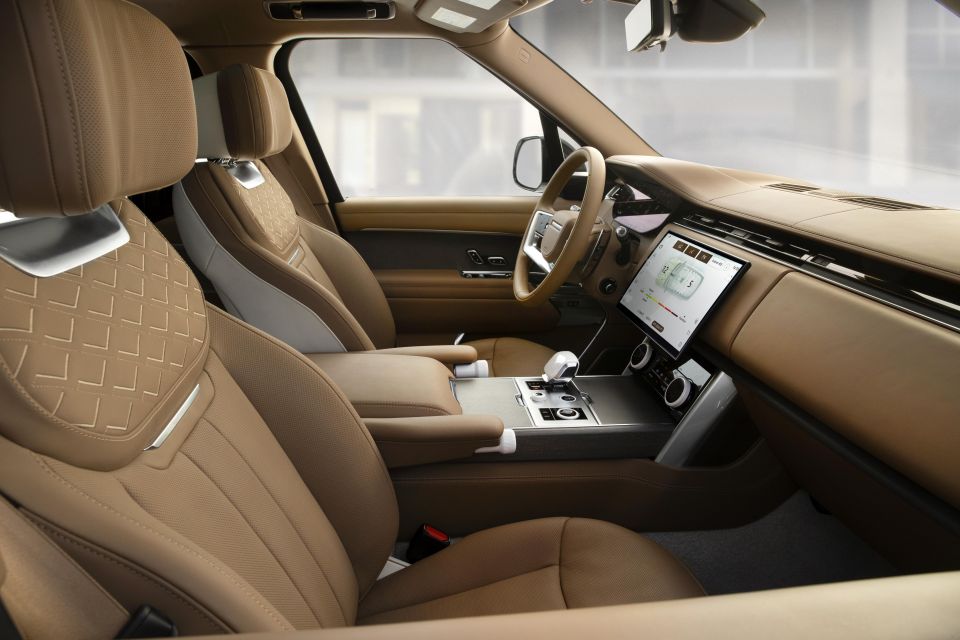
All that aside, one must open the door of the Range Rover SV to really feel that sense of wow! The Range Rover SV exists to present what is currently the best interior of any luxury SUV in the market.
It’s a fully customisable tour de force that is more than just latest tech or superb craftsmanship, it’s a culmination of what it takes to please those that are willing to fork out $400,000 and above for an SUV.
Not many cars elicit an audible sense of astonishment when the doors open, but couple your top-spec Range Rover with the optional ‘SV Signature Suite’ four- seat configuration and we can all but guarantee that you won’t want to ever leave the backseat.
Perhaps there in lies the only problem with owning a Range Rover SV, the one you want is best enjoyed from the back seat – and while Australians categorically love to drive themselves, in this case, we suggest it might be time to enjoy the epitome of luxury motoring and let someone else do such menial tasks as driving, at least some times.

There are a fair few ways in which you can have your Range Rover SV.
Prices start at $341,300 before on-road costs for the most affordable SV, which is a standard wheelbase.
There’s a roughly $45,000 price hike to the long wheelbase, and then there are a range of engine options from the D350 twin-turbo six-cylinder diesel to the P530 twin-turbo petrol V8.

There are two optional exterior and interior themes to pick from for your SV. Both exterior packages cost a fairly reasonable $5590.
SV Intrepid Exterior
SV Serenity Exterior

The interior themes, meanwhile, are priced at $7640.
SV Intrepid Interior
SV Serenity Interior
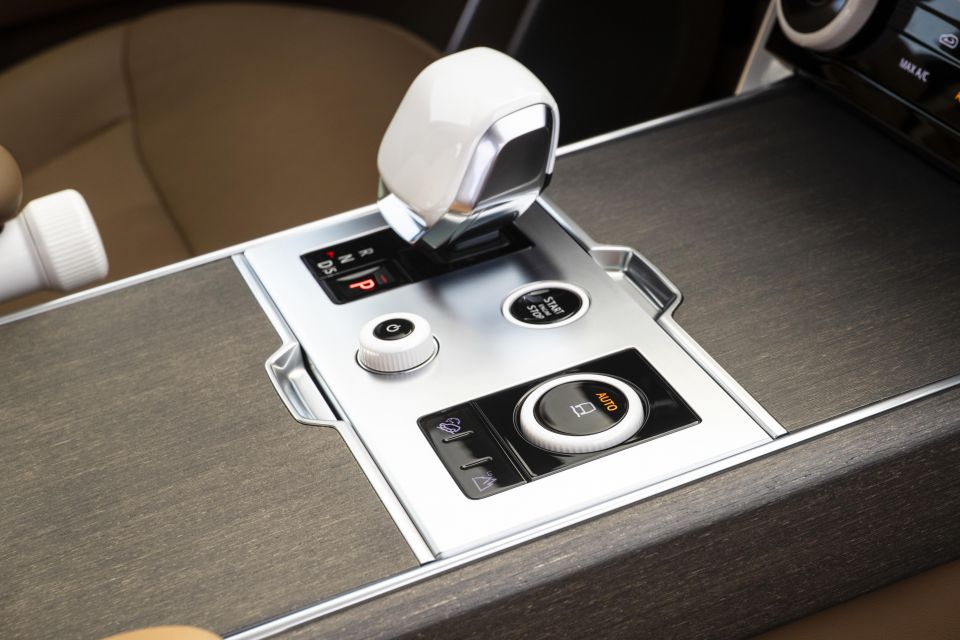
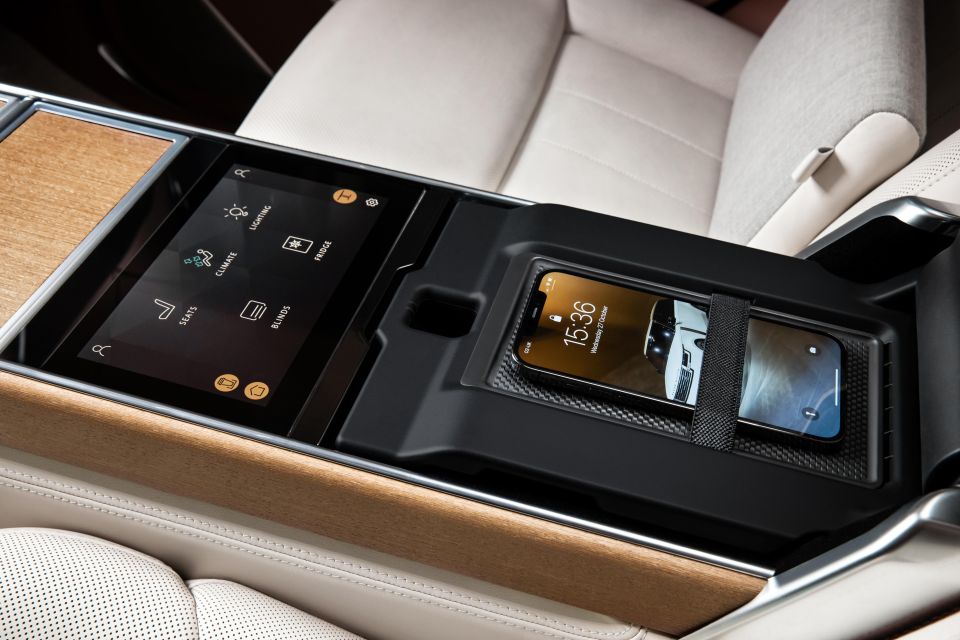
There are six standard exterior paint colours to pick from, including Santorini Black, Borasco Grey, Hakuba Silver, Belgravia Green, Varesine Blue and Ostuni Pearl White. Carpathian Grey will set you back $2220.
You then move into what the company calls Bespoke ultra metallic paint colours, of which there are 13, and they cost $11,050 – from British Racing Green and Velocity Blue to Sanguinello Orange and Sunrise Copper. We do love some of the options available to brighten up your Range Rover.
If that wasn’t enough, there is always the Icy White Bespoke special effect paint for $14,600, or you may as well go all out with the ultra metallic version of the Bespoke ultra collection mentioned above but in satin. That will set you back $17,000.
Some silly options include $830 for privacy glass and a contrast coloured roof ($2000) that should be a no-cost option, while there are an incredible 15 different wheel choices ranging from 21 to 23 inch size and costing up to $5070.
Two interior trim options of SV are free of charge, but if you want to go for the SV Serenity or Intrepid options for the Near-Aniline leather, or special fabrics, it will set you back another $7640.

The dual 13.1-inch rear entertainment screens are $7050, but we think an iPad will serve that purpose far better. A range of finishers are also available, ranging from free for the natural black to $5680 for the satin white ceramic. If you really want to go old school, an SV Bespoke wood and leather steering wheel will set you back $1030.
There is a SV Convenience option pack that adds a front refrigerator compartment (because the one in the rear wasn’t enough), plus a proper wall plug socket, a garage door opener, an activity key and upgraded alarm system. Add another $4690 for this package.
The party trick, though is the SV Signature suite which you can only get with the long-wheelbase configuration.
It will set you back a cool $38,510 and includes:

Buy your new car without the stress. It's fast, simple and completely free.
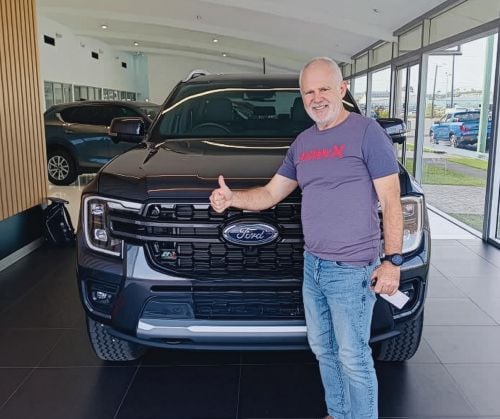
Great service from Travis and team, second time I have used this business would not hesitate to recommend them to anyone
Craig C.
Purchased a Ford Ranger in Sunshine Coast, QLD
CarExpert helped Craig save $7,224 on his Ford Ranger, now let us save you on your next new car.
Get your BEST priceThe new Range Rover SV hasn’t been crash tested by ANCAP or Euro NCAP, although it would be safe to say it will likely score a comfortable five-star safety rating when it does.
Standard safety equipment includes:
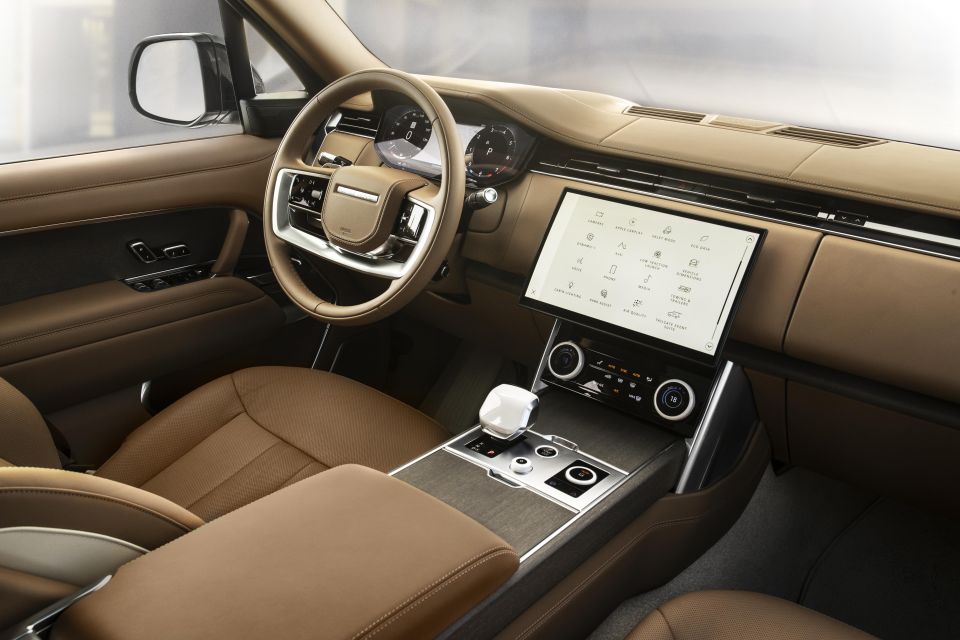
Glorious.
Watch the video we did of the Range Rover SV’s interior below to give you an idea of how a luxury SUV should be.
Like the ‘regular’ Range Rover, the SV carries with it a sense of overwhelming space. A command seating position that gives excellent visibility and a sense of freedom that is unmatched by all except the Rolls-Royce Cullinan.
The fit and finish of the Range Rover SV is beyond any Range Rover we have driven in the past, including the previous generation Range Rover SVAutobiography.
There is no surface, no touch point, nothing at all that feels even remotely mediocre or cheap. The car is oozing class and sophistication without being over the top.
While Range Rover designers have applied their reductive modernity design language to the outside, you can also see it on the inside. There’s nothing in the interior that serves no purpose or does not flow from one element to another.

If you don’t need five seats, option up the SV Signature Suite and you will be absolutely delighted with the four-seat setup, particularly in the rear where you are basically being driven around in a fully limousine-style setup with a reclining chair that pretty much allows you to fully stretch out.
The 3D-printed tables fold out with a flick of a button, and clicks in nicely while also turning towards the desired occupant. It’s a great idea and given just how smooth and easy riding the Range Rover SV is, we found it pretty useful for eating unless you go over some very big bumps.
Another talking point is the cam-driven rear central cupholder which uses a motor and two belts to not only open up the lid of the cup-holder but also lift it up like an elevator. It’s super smooth and the sort of feature that just adds to the sense of modernity without distracting from old-school luxury.
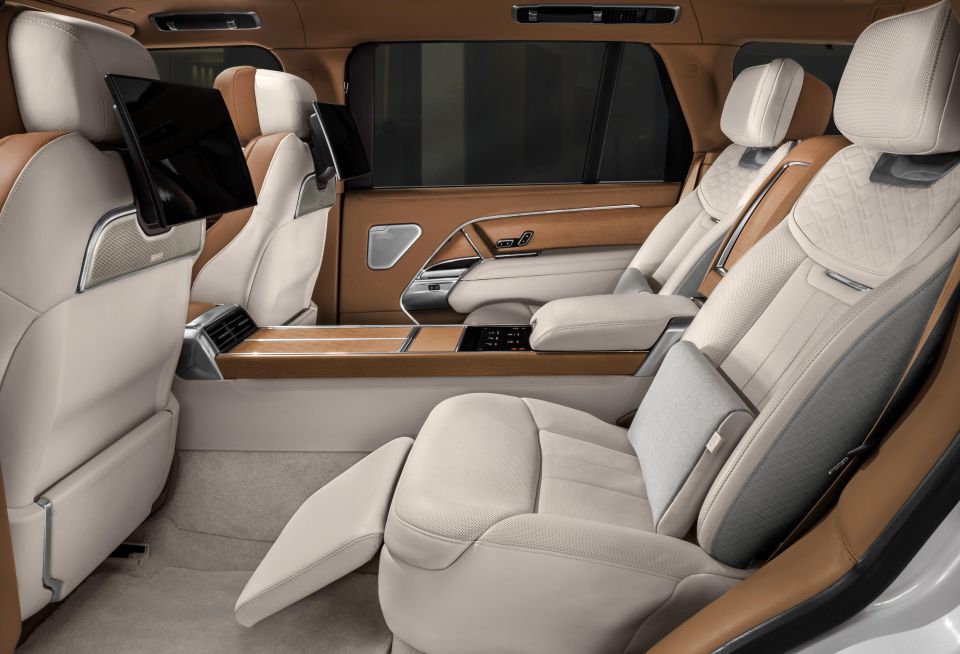
There’s also a fridge, big rear entertainment screens and everything else you can imagine for a comfortable long-distance drive.
The good news, though, is that even if you like to drive yourself, you will do so in maximum luxury with heated, cooled, massaging and super comfortable front seats that are very supportive.
There are two screens in the first row, a 13.7-inch digital instrument cluster sitting behind a glass panel backed up by an augmented reality head-up display, nicely complementing the rather massive and curved 13.1-inch centre touchscreen.
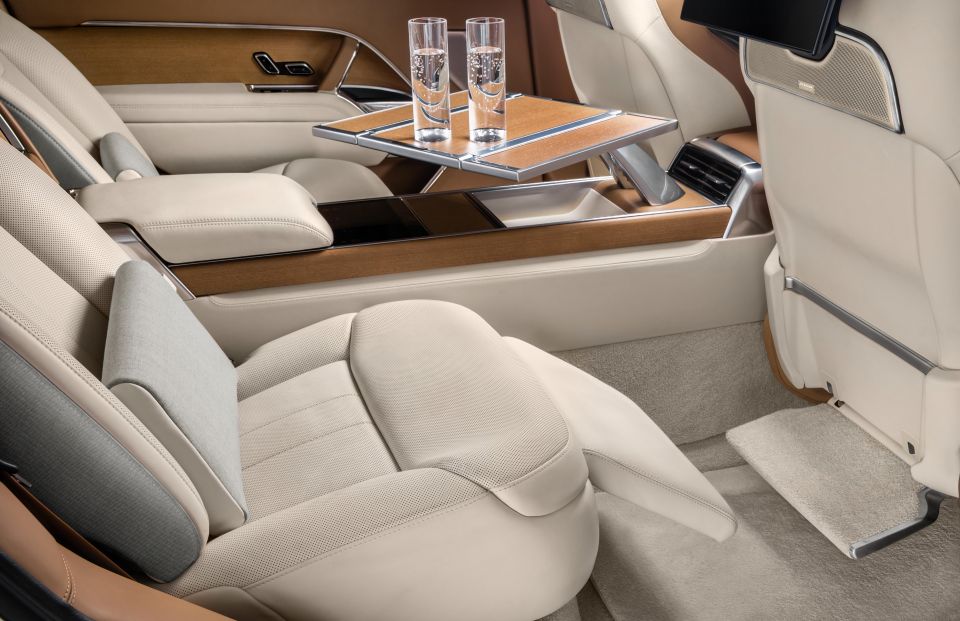

It’s actually a challenge to criticise the Range Rover SV’s interior. We sat in the car for a good hour touching every surface, opening and closing every possible thing, and perhaps the only negative we could find is the front infotainment screen. Given just how much space you have in the car, you will often find yourself almost leaning in the direction of the infotainment display to use it, which can be annoying.
Overall, though, the interior of the Range Rover SV is the absolute perfect place to be when one goes from the inner city out to a country estate, or if you spend a lot of time working in your chauffeur-driven vehicle in heavy traffic.
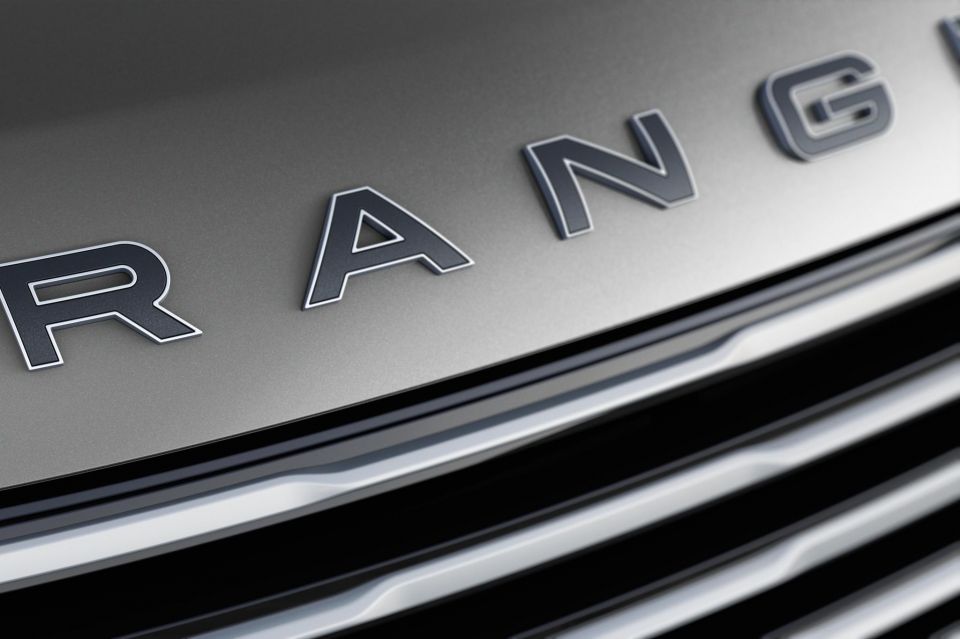
Where expert car reviews meet expert car buying – CarExpert gives you trusted advice, personalised service and real savings on your next new car.
For now, there are two engine options for the Range Rover SV:
Range Rover will also bring a new extended-range plug-in hybrid powertrain, which will see a 3.0-litre six-cylinder petrol engine coupled with a 105kW electric motor which delivers 375kW of power and 125km of electric range.
Coming in 2024 will be a fully-electric Range Rover which will more than likely have a 500km+ range.

As with the standard Range Rover, the SV is a big beast.
It has all the latest technology when it comes to chassis management, and despite our best attempts to upset it, the the SV doesn’t present with much body roll or illicit any kind of unpredictable movements when pushed into corners at high speed.
It’s also very smooth at low speeds and was very welcoming of dirt roads, as you’d expect.

Land Rover engineers have managed to keep the big SUV from feeling as big as it looks with the use of air suspension, a 48V active anti-roll stabilisation system, and by employing technology such as super-fast-reacting (5ms) twin-valve dampers. Even so, it’s hard to argue with physics and a kerb weight of more than 2700kg.
Behind the wheel the best part of driving a Range Rover SV is how quiet it is inside, despite a bit of wind noise from the mirrors, and just how smooth it feels over bumps and surfaces.
While there are 23-inch wheels available, you don’t necessarily have to spec them and perhaps sticking with 22s might provide a smoother ride, as we found out (though it does look superb on the bigger wheels).

Another useful feature is the rear-wheel steering (opposite direction at slow speeds and same direction at high speeds) which improves the turning circle substantially at 10.95m for the standard wheelbase and 11.96m for long wheelbase.
We took the standard Range Rover off-road and as with the SV, it has low-range gearing in addition to a very competent 50:50 rear diff lock and the same Terrain Response system as the new Defender.
While it’s certainly very capable off the beaten track, it’s just not the sort of car you would take off-road, even if you could.
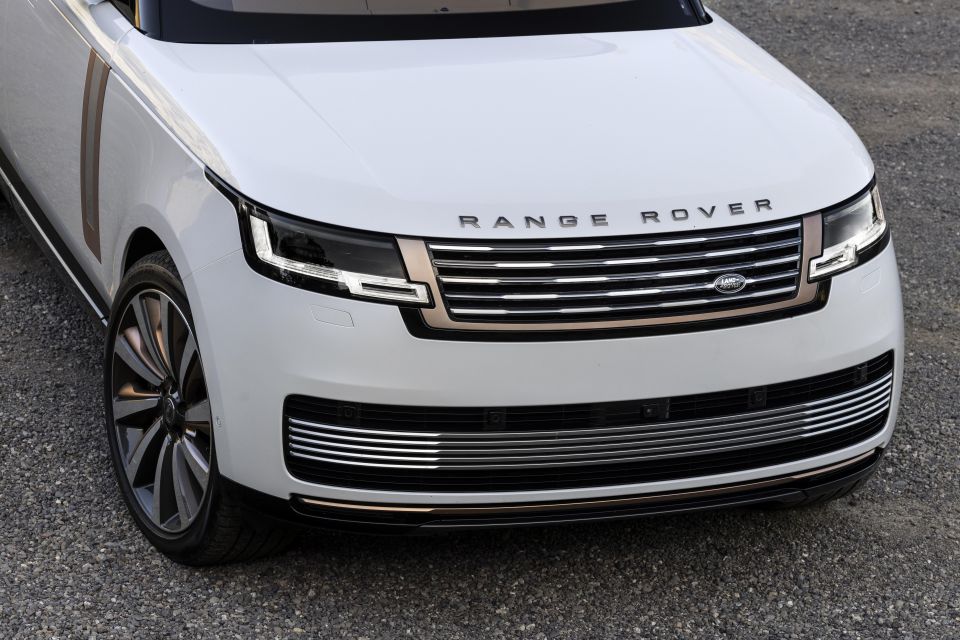
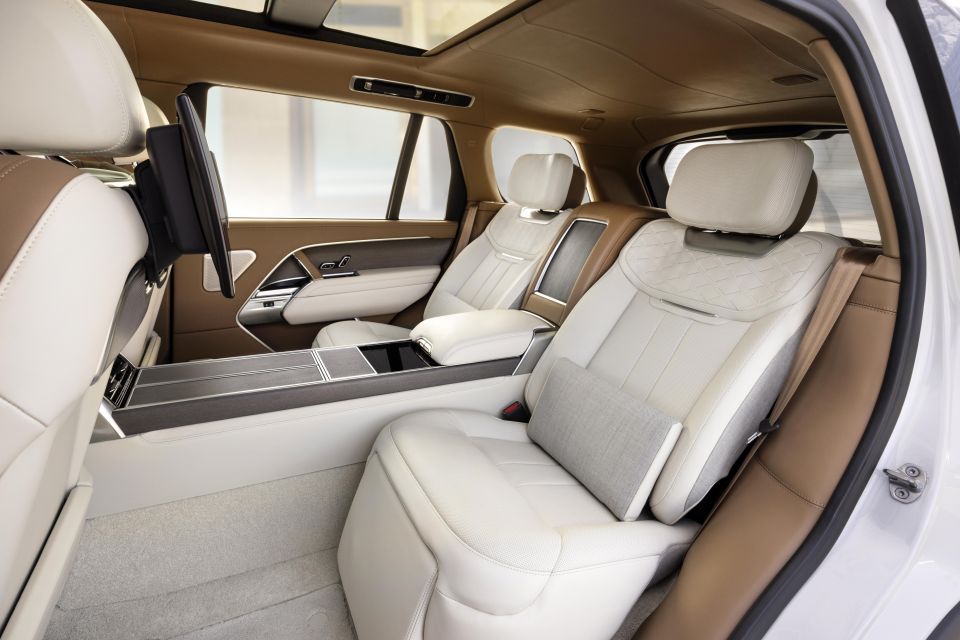
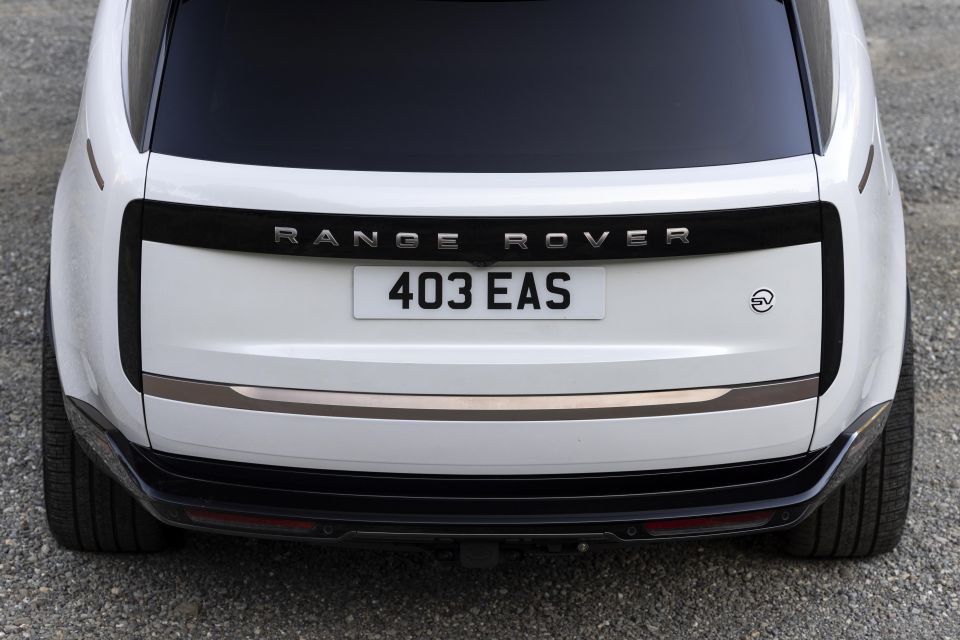

The list of Range Rover features is exhaustingly long and we recommend having a look at this PDF for a full feature list.
Most of the features unique to the SV are part of the Intrepid and Serenity packs discussed above. In fact, the idea of buying an SV is to then unlock the possibility of paying for SV-only options such as the signature suite.
Below is a list of SV specific features that don’t need to be optioned:
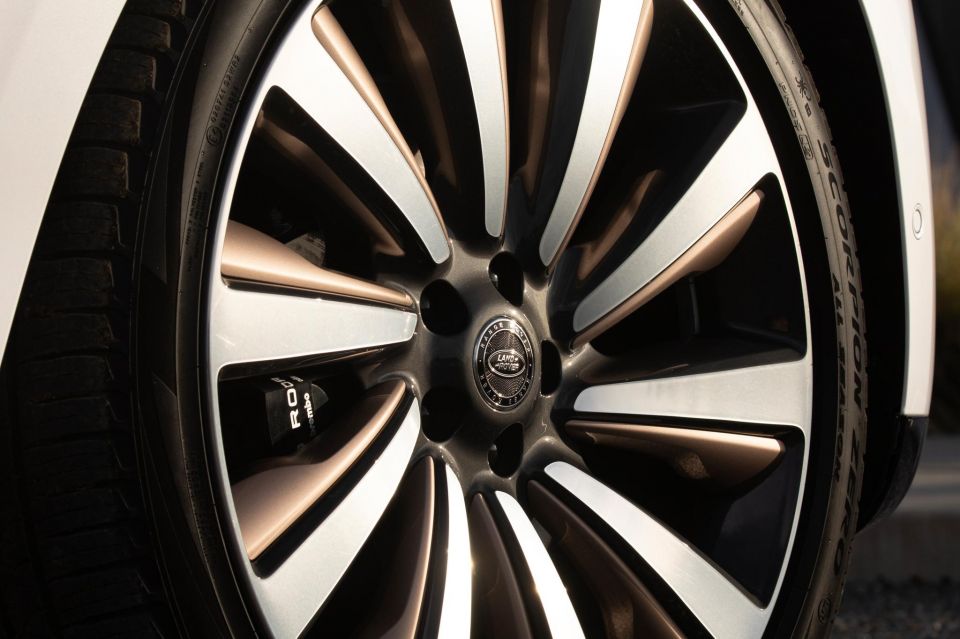
As with the current full-size Range Rover, the new generation model including the SV comes with five years of free servicing in Australia – meaning the only things you will pay for are consumables (tyres, brake pads, etc.).
In addition, like all other Land Rover products, the new Range Rover will be covered with a five-year, unlimited-kilometre warranty, which should put your apprehensions about British reliability to rest.
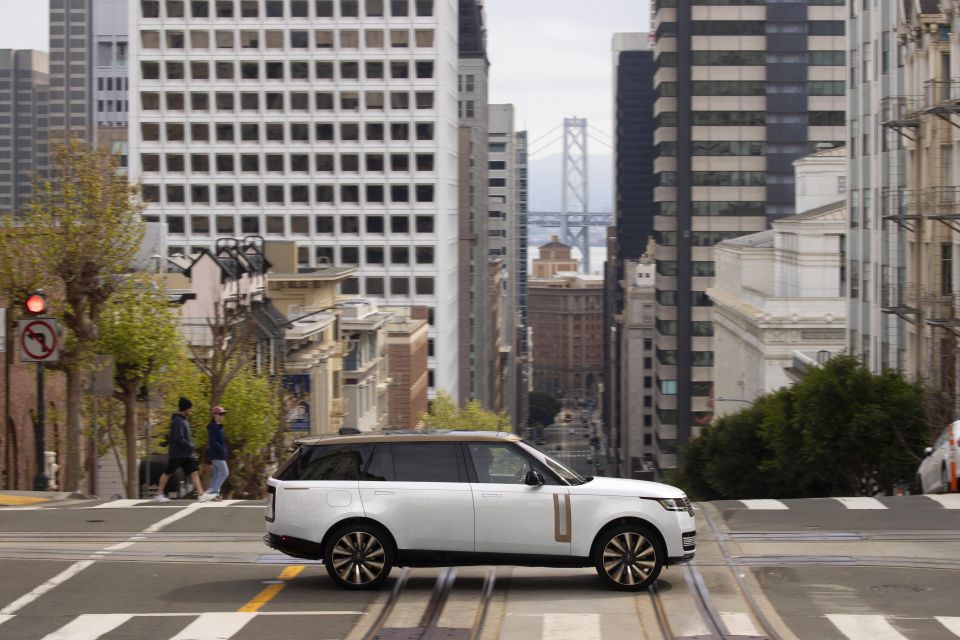
Buy your new car without the stress. It's fast, simple and completely free.

Great service from Travis and team, second time I have used this business would not hesitate to recommend them to anyone
Craig C.
Purchased a Ford Ranger in Sunshine Coast, QLD
CarExpert helped Craig save $7,224 on his Ford Ranger, now let us save you on your next new car.
Get your BEST priceIf you have about $400,000 to $500,000 to spend on an SUV your choices are definitely not limited.
You have the performance-orientated flashy options like the Lamborghini Urus, to the super-luxe offerings such a-la the Bentley Bentayga, but while the Bentley is arguably a beautifully-handcrafted SUV, it doesn’t offer the same level of space and off-road capability as the full-size Range Rover SV.
The only rival that really makes for a like-for-like comparison is the Rolls-Royce Cullinan, and if we’re comparing a Range Rover to a Rolls Royce, that says a lot about the new Range Rover SV.

Click the images for the full gallery
MORE: Everything Range Rover
Where expert car reviews meet expert car buying – CarExpert gives you trusted advice, personalised service and real savings on your next new car.
Alborz is the founder of CarAdvice (sold to Nine and now Drive) and co-founder of CarExpert. He is an honourary adjunct professor & entrepreneur in residence at the University of QLD. He loves naturally-aspirated V8s, V10s and V12s and is in denial about the impending death of the internal combustion engine. The best way to reach him is via Instagram.


Max Davies
5 Days Ago
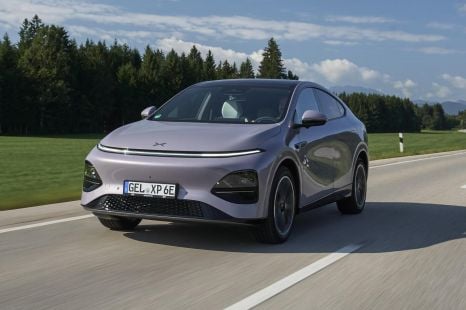

Neil Briscoe
4 Days Ago
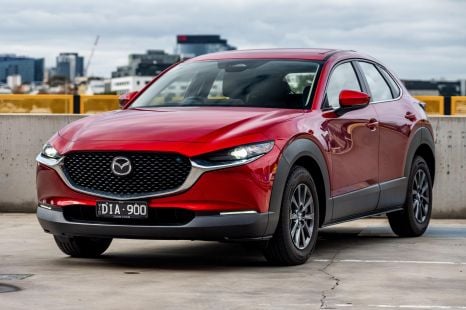

Max Davies
3 Days Ago


James Wong
2 Days Ago
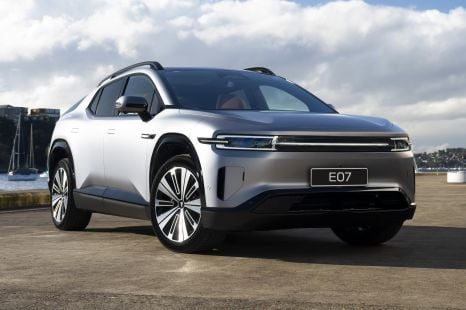

William Stopford
2 Days Ago
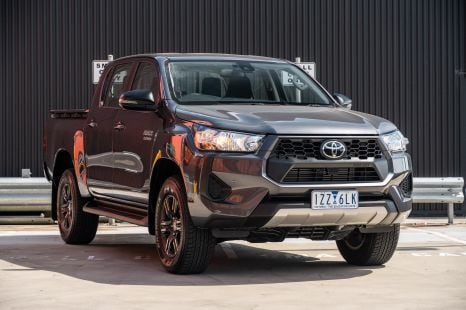

Josh Nevett
15 Hours Ago